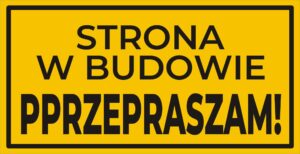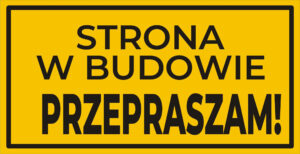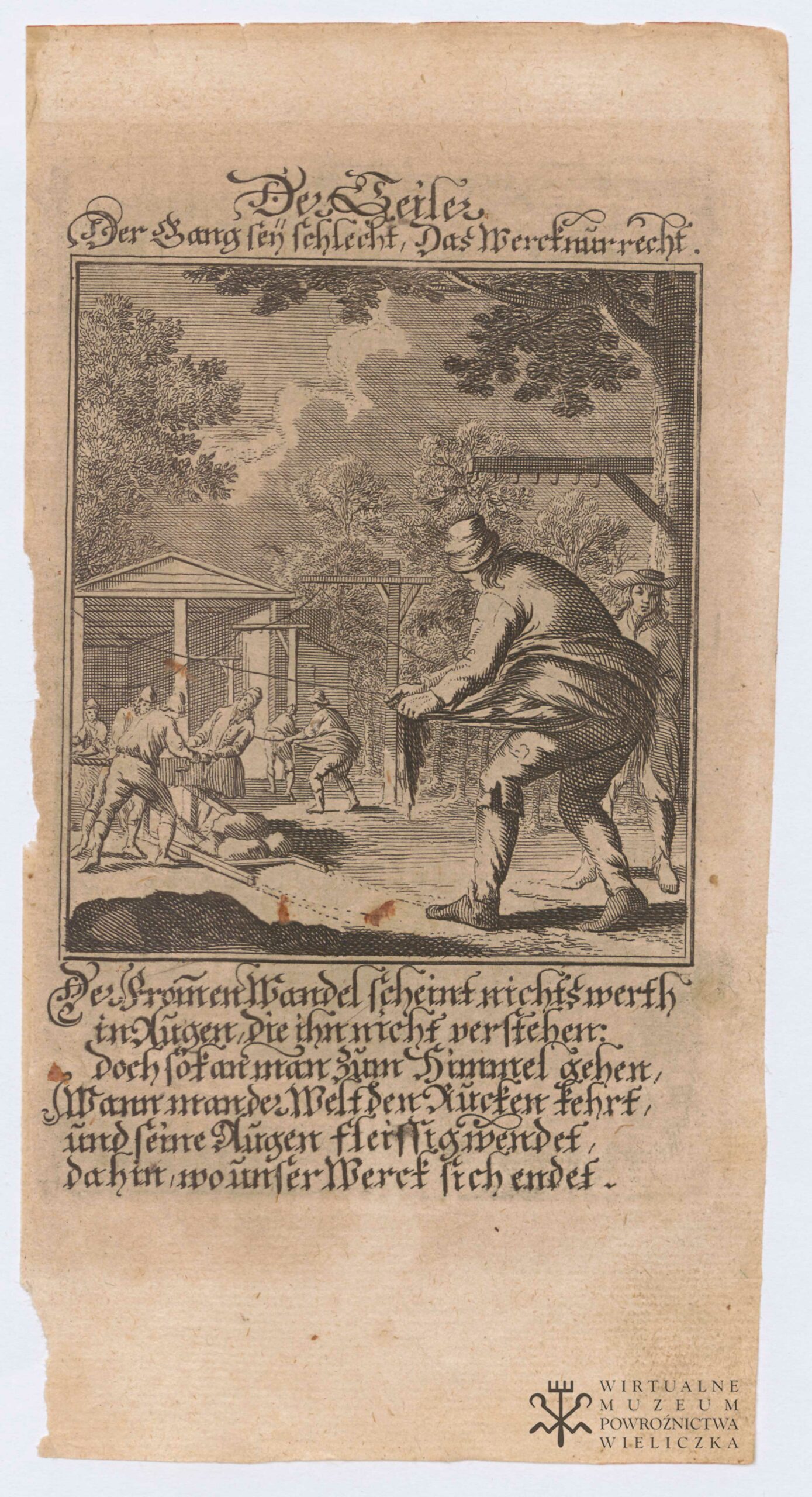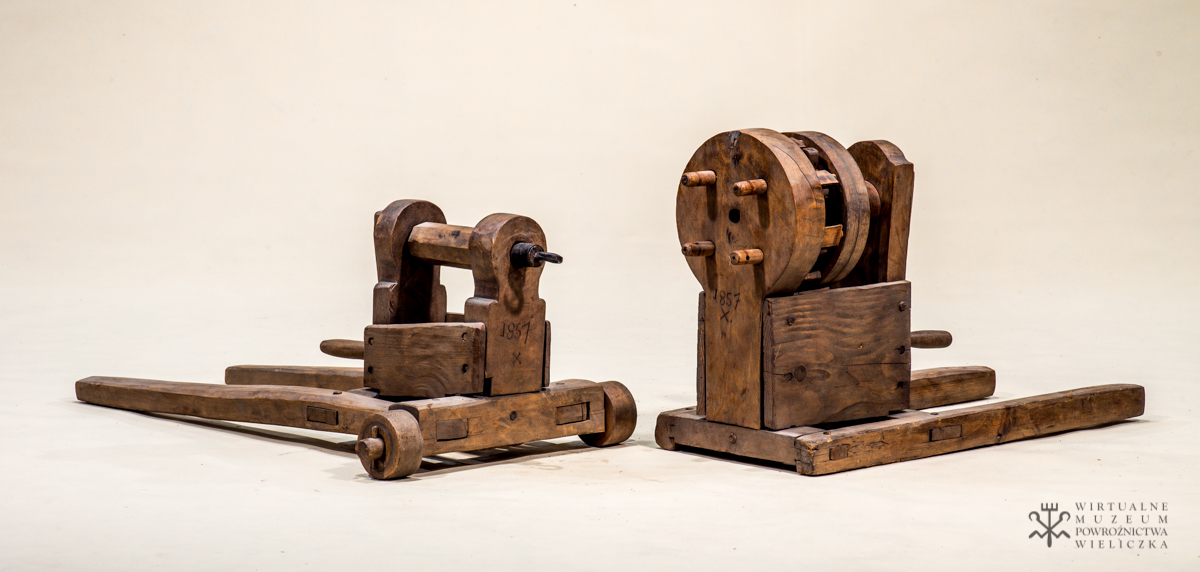



Der Seiler
Source: Abraham a Sancta Clara, Etwas für Alle/ Das ist: Eine kurtze Beschreibung allerley Stands- Ambts- und Bewerbs-Persohnen / Mit beygedruckter Sittlichen Lehre und Biblischen Concepten… published by Christoph Weigel, 1699, p. 500.
It is dated to circa 1730.
The engraving shows an open ropemaker’s workshop building and the square in front of it (the so-called ropemaker’s track – without a roof). Several ropemakers (one in the foreground, right) are spinning threads from hemp fibers, which they have wrapped around their waist. As they work, they step back. Some ropes are suspended from hooks attached to tall poles. On the left you can see a ropemaking machine loaded with stones, operated by several ropemakers. Two of them turn a crank, twisting the thick rope. During this process, the machine moves forward, gouging ruts in the ground. This happens because the twisted rope shortens.
Above the representation are the words:
“Der Seiler
Der Gang sey schlecht,
Das Werck nur recht.”
Powroznik
Maybe his gait bad
But the work – good.
Below the performance is a poem:
“Der Frommen Wandel scheint nichts werth
In Augen, die ihn nicht verstehen:
doch so kann man zum Himmel gehen,
Wann man der Welt den Rucken kehrt,
und seine Augen fleissig wendet,
dahin, wo unser Werck sich endet.”
The fate of the pious worth nothing sometimes
When the world cannot understand him:
However, by this road he will reach heaven,
Who turns his back to the world
And on his work he diligently ponders
Until the end crowns our work.
(translated by Ewa Dybczynska)
Abraham a St. Clara’s work, Etwas fur Alle (in German) or Iets voor Allen (in Dutch) – Something for Everyone – was an imitation of an older publication. In 1694, Amsterdam artists Jan and Casper Luyken published Spiegel van het Menselyk Bedryf, a collection of one hundred engravings depicting arts and crafts. The graphic representations were accompanied by the name of the profession, a short sentence (above) and a six-line poem (below). The book was a great success and was reprinted many times (until 1767). Other printers and booksellers also tried to profit from the popular bestseller. The 1699 version by Abraham de St. Clara had as many as 200 engravings.
Abraham a Santa Clara (1644-1709) – was an Austrian Augustinian monk, preacher and author of popular devotional books, known for his great eloquence.
material / technique
paper, copperplate
dimensions:
height / width
17.7 cm / 9.5 cm
Zobacz także



